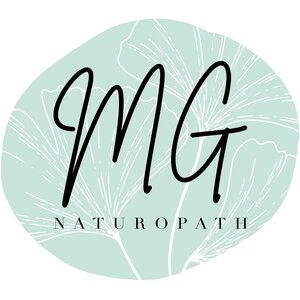This article was based on a Wellness Mama blog, which was in turn medically reviewed by Dr. Scott Soerries, MD, Family Physician and Medical Director of SteadyMD. As always, this is not personal medical advice and we recommend that you talk with your doctor.
We have probably all seen by now the research coming out about the harmful effects of sunscreens. Not only can the chemicals in most generic sunscreens be harmful to our health, but they are also harmful to our oceans.
Recently, reports from the Environmental Working Group (EWG) and Consumer Reports have warned consumers against using many types of conventional sunscreens, especially on children.
Sunscreen is Harmful?
Sunscreen use has risen in past decades, as media outlets and doctors tout the benefits of sunscreen for protecting against skin cancer and sunburn. Especially here in Australia, with the ‘Slip, Slop, Slap’ campaign, we have become very afraid of not using sun protection every time we step outside. The problem with this billion dollar a year market: not all sunscreens are created equal and in many cases sunscreen is harmful, not helpful.
Here’s why:
There are two ways that a sunscreen can protect the skin from sun damage: with a mineral barrier or a chemical one.
Mineral sunscreens typically include ingredients like zinc oxide or titanium dioxide, which create a physical barrier to protect the skin from the sun.
Chemical sunscreens (most on the market) use one or more chemicals including oxybenzone, avobenzone, octisalate, octocrylene, homosalate and octinoxate.
These sunscreen chemicals raise some special concerns because many are able to cross into skin and other tissue (as anything you apply directly onto your skin does).
This new research by the EWG reveals that the chemicals commonly used in sunscreen are endocrine (hormone) disruptors, estrogenic and may interfere with thyroid and other hormone processes in the body.
The most common sunscreen chemical, Oxybenzone, was found in 96% of the population by a recent study by the Center for Disease Control and Prevention. This is especially alarming since oxybenzone is considered an endocrine disruptor, can reduce sperm count in men and may contribute to endometriosis in women.
The EWG warns against using oxybenzone, especially on children or pregnant/breastfeeding women.
Of the 1,400+ sunscreens tested by the EWG, only 5% met their safety standards and over 40% were listed as potentially contributing to skin cancer. It seems ludicrous, I know!
Spray sunscreens have become increasingly popular in recent years, but have additional dangers, especially if inhaled. Consumer Reports warns that spray sunscreens should not be used on children and that adults should exercise caution and make sure not to use on the face or inhale them. Not to mention the detrimental effects of the sprays as they are absorbed into the ozone layer.
Many sunscreens also contain methylisothiazolinone, which the American Contact Dermatitis Society named as its “allergen of the year”!
Vitamin D Dilemma
We’ve already established that some sunscreen is harmful and may do more harm than good, but another important consideration that is often ignored: Vitamin D.
Most sunscreens completely block the body’s ability to manufacture Vitamin D. Statistically, 75% of us are deficient in Vitamin D and Vitamin D deficiency has been linked to higher risk of cancer and heart disease (which kill more people than skin cancer per year).
It seems crazy, but here we are lathering up with chemical sunscreens that have the potential to greatly increase skin cancer risk and reduce Vitamin D production in the name of avoiding skin cancer, and increase our risk of more widespread diseases related to Vitamin D deficiency!
Important Note:
The topic of if sunscreen is harmful is a loaded one. We need to exercise caution in sun exposure (especially overexposure) to the sun, however, as more and more evidence emerges about the dangers of many sunscreens and their potential to increase rates of skin cancer, it is important not to depend on sunscreens or think that regular sunscreen use decreases the risk of skin cancer.
A Safer Option: Mineral Sunscreens
Mineral sunscreens are typically considered a safer option, but some mineral sunscreens also contain some of the chemical ingredients above and have the same risks.
Additionally, if nano particles of zinc oxide or titanium oxide are used, these can enter the body and carry risks as well. Since these offer physical barriers, it is also more difficult to accurately pinpoint the SPF of some mineral sunscreens.
There are also some natural mineral sunscreens that the EWG lists as safe (some of these are available on iHerb):
The Safest Option: Cover Up
If sun exposure is a big concern for you or you have a family history of skin cancers, the safest option is to avoid the sunscreens that the EWG has said might contribute to skin cancer and use the safest form of sun protection: covering up.
With all the information and mis-information about sunscreen out there, the easiest and safest way to avoid sun damage is to stay in the shade, wear a hat or long sleeves.
The recent research shows that certain chemical sunscreens may carry more of a risk than moderate sun exposure, so avoid these sunscreens is also an important step, whilst ensuring you are getting enough Vitamin D with a small amount of exposure.
Bottom Line
It is important to be responsible with sun exposure, but many sunscreens offer a false security of sun protection and may do more harm than good.
The safest option is covering up and supporting skin health internally and externally. Mineral sunscreens (without nano particles or sunscreen chemicals) are also a good option, but for the most part, spray and chemical sunscreens should be avoided.
With the widespread availability of natural mineral sunscreens on the market now, please consider choosing safer sunscreens for your family.
We stock natural sunscreen in the clinic - Ask me at your next consult and chat to me about how best to support your body internally throughout Summer.

